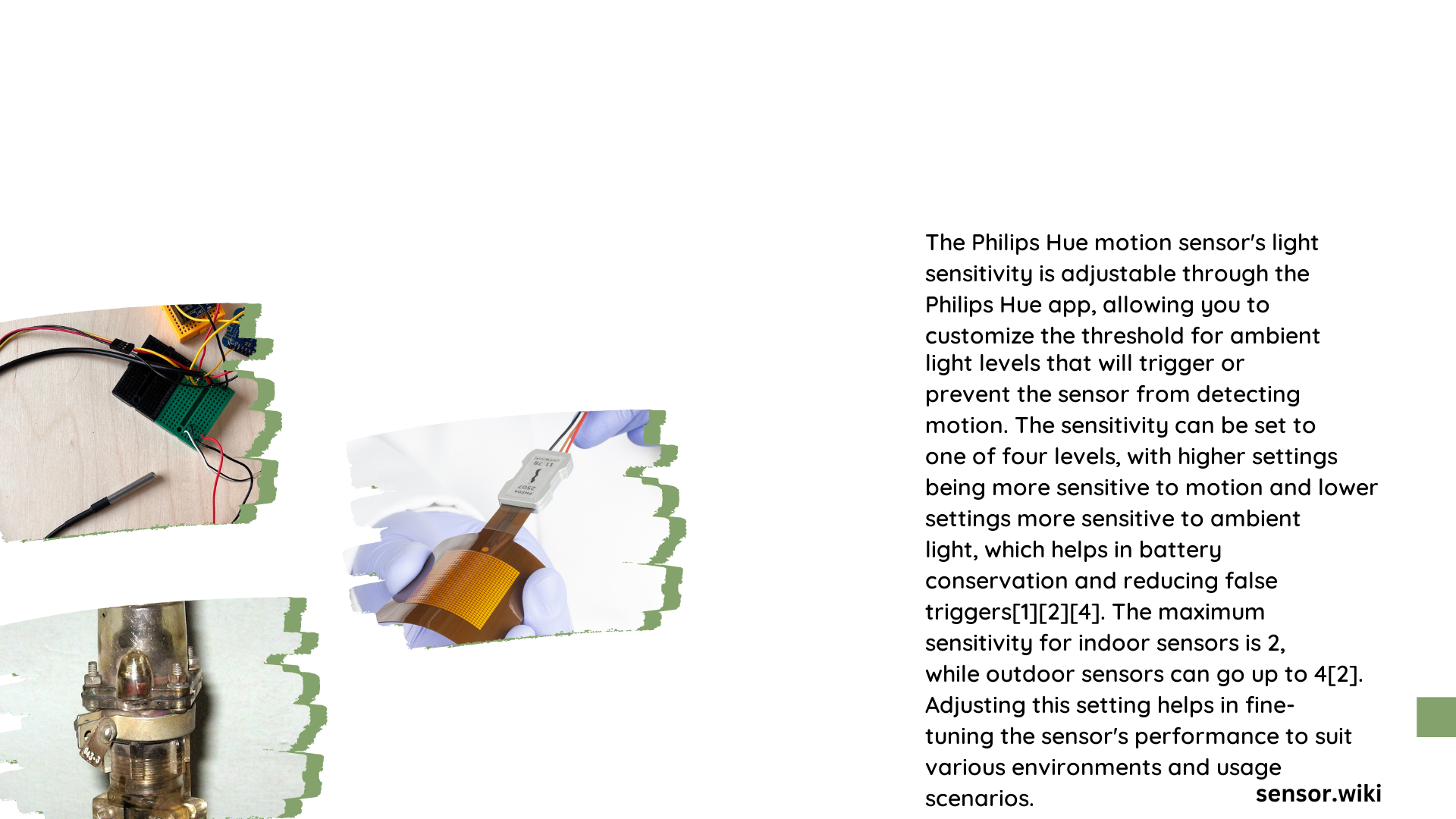The Philips Hue motion sensor offers sophisticated light sensitivity controls that enable users to fine-tune detection accuracy across various environments. By understanding and adjusting motion and daylight sensitivity settings, homeowners can create intelligent lighting experiences that respond precisely to movement and ambient light conditions, minimizing false triggers and maximizing energy efficiency.
What Makes Philips Hue Motion Sensor Sensitivity Unique?
Philips Hue motion sensors provide granular control over light detection through two primary sensitivity mechanisms:
Motion Detection Sensitivity Levels
| Sensitivity Level | Detection Characteristics | Recommended Use |
|---|---|---|
| Low (0-1) | Minimal motion detection | Quiet areas, minimal movement |
| Medium (2-3) | Standard motion tracking | Regular living spaces |
| High (4) | Extremely responsive | High-traffic zones |
Key Sensitivity Configuration Methods
- Philips Hue App Configuration
- Navigate to Settings > Accessories
- Select specific motion sensor
- Use slider controls for precise adjustments
-
Real-time feedback on sensitivity changes
-
Alternative Integration Platforms
- Zigbee2mqtt: Sensitivity range 0-4
- ZHA Integration: Sensitivity range 0-2 (indoor), up to 4 (outdoor)
How Do Environmental Factors Impact Sensor Sensitivity?

Indoor Environment Considerations
- Room Layout: Open spaces require different sensitivity compared to confined areas
- Furniture Placement: Obstructions can affect motion detection accuracy
- Ambient Light: Natural and artificial lighting influence sensor performance
Outdoor Environment Challenges
- Weather Conditions: Wind, moving trees can trigger false detections
- Animal Movement: Pets and wildlife may cause unintended light activations
- Recommended Strategy: Lower sensitivity, strategic sensor placement
What Are Best Practices for Optimal Sensor Configuration?
Strategic Placement Tips
- Avoid direct window positioning
- Mount at recommended height (approximately 6-7 feet)
- Minimize potential interference sources
- Test and iterate sensitivity settings
Advanced Configuration Techniques
- Use integration platforms for micro-adjustments
- Implement time-based sensitivity profiles
- Combine with other smart home automation rules
Technical Insights into Sensor Functionality
Sensor Technical Specifications
- Detection Range: Typically 16 feet radius
- Detection Angle: Approximately 120 degrees
- Response Time: Sub-second motion detection
- Battery Life: Up to 2 years with standard usage
Daylight Sensitivity Nuances
- Real-time ambient light measurement
- Prevents unnecessary light activation during daytime
- Customizable threshold settings
- Energy conservation mechanism
Troubleshooting Common Sensitivity Issues
Potential Configuration Challenges
- Unexpected light triggers
- Missed motion detection
- Inconsistent sensor performance
Recommended Diagnostic Steps
- Verify sensor firmware updates
- Check battery status
- Recalibrate sensitivity settings
- Assess environmental interference
Expert Recommendations
- Start with default settings
- Make incremental adjustments
- Document configuration changes
- Regularly review and optimize settings
Performance Optimization Checklist
- [ ] Verify sensor placement
- [ ] Test sensitivity levels
- [ ] Monitor false trigger frequency
- [ ] Adjust based on usage patterns
Emerging Smart Home Integration Trends
As smart home technologies evolve, motion sensor sensitivity continues to become more sophisticated, with machine learning algorithms promising even more precise detection capabilities in future iterations.
Future Potential
- AI-driven adaptive sensitivity
- Predictive motion tracking
- Enhanced energy management
Pro Tip: Always approach sensor configuration as an iterative process, making small, measured adjustments to achieve optimal performance.
